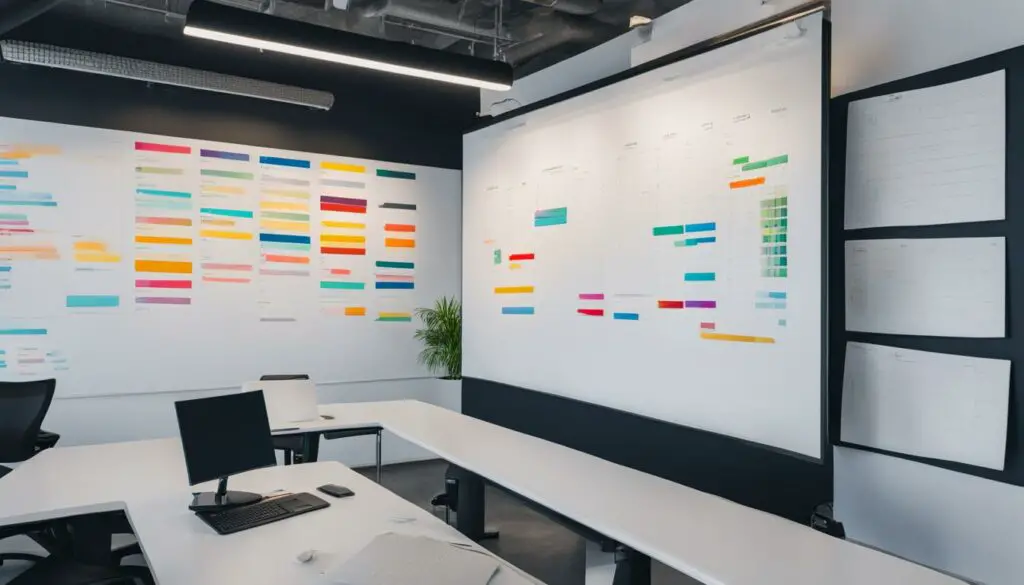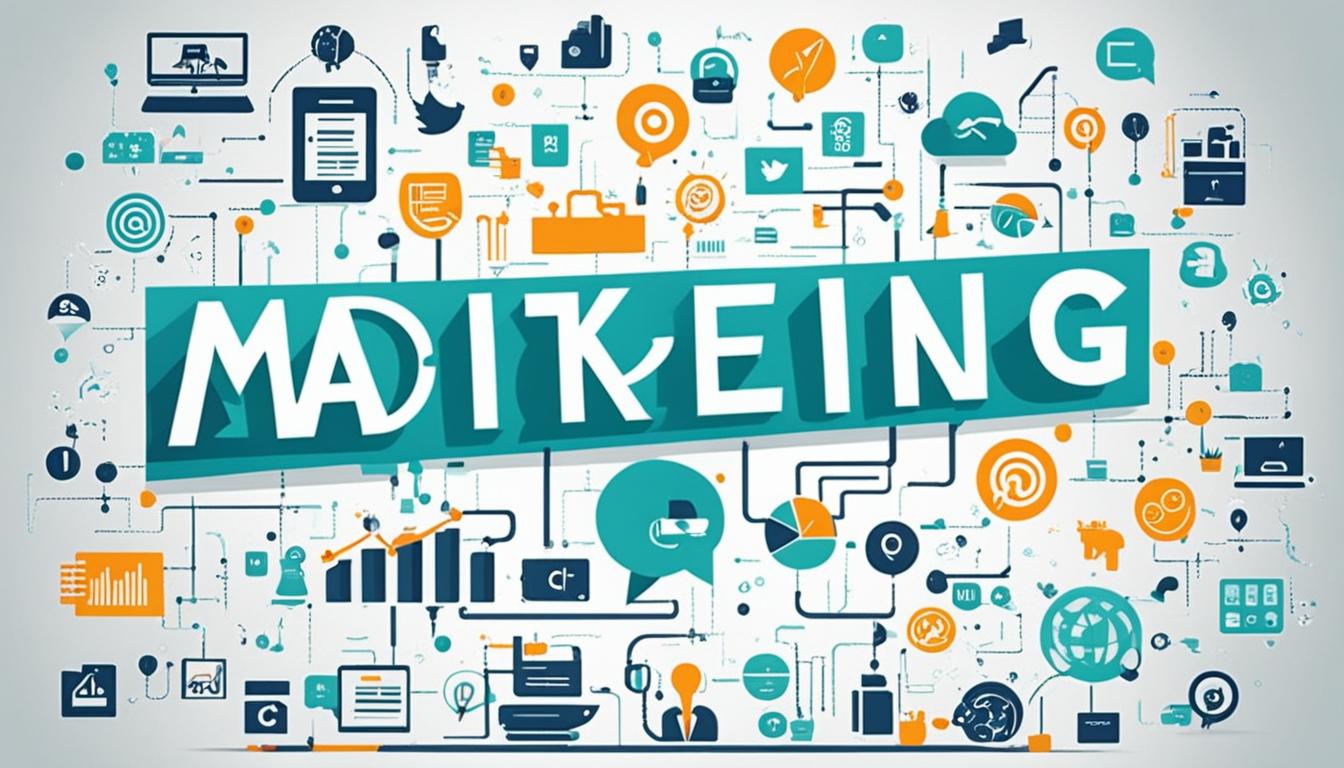When it comes to careers in the creative industry, digital marketing and graphic design are two popular choices that offer unique opportunities. While both fields involve creativity and visual elements, they have distinct differences in terms of job roles, skills required, and career paths. Understanding these differences can help individuals make informed decisions about their professional goals.
Digital marketing focuses on promoting products or services through online channels. It involves strategies such as search engine optimization (SEO), social media marketing, content creation, and email marketing. On the other hand, graphic design centers around creating visual content for various mediums, including print materials, websites, advertisements, etc. Graphic designers use their creativity and technical skills to convey messages and evoke emotional responses through visual elements.
In terms of career opportunities, digital marketing offers a wide range of roles such as digital marketer, social media manager, content creator, and SEO specialist. Graphic design, on the other hand, provides opportunities in areas like logo design, web design, UI/UX design, and brand identity development. Both paths have their unique niches, and individuals can choose based on their interests, skills, and desired career trajectory.
To succeed in digital marketing, skills such as data analytics, content creation, social media management, and search engine optimization are crucial. In graphic design, proficiency in design software, typography, color theory, and visual communication is essential. Continuous learning and staying updated with industry trends are vital for success in both fields.
When it comes to education, there are various options available for aspiring professionals. Some choose to pursue degrees in marketing or graphic design, while others opt for specialized bootcamp courses or online certifications. Regardless of the path chosen, a combination of formal education and practical skills is necessary to thrive in these industries.
Finally, salaries in both digital marketing and graphic design can vary depending on factors such as experience, location, and job role. On average, digital marketers earn around $70,000 per year, while graphic designers make approximately $50,000 annually. However, these numbers can vary significantly based on factors like seniority level, industry, and specialization.
Key Takeaways:
- Digital marketing and graphic design offer distinct career paths and opportunities.
- Digital marketing focuses on online promotion, while graphic design involves visual content creation.
- Digital marketing requires skills in SEO, content creation, and data analytics, while graphic design relies on design software proficiency and visual communication skills.
- Both fields require continuous learning and staying updated with industry trends.
- Salaries in digital marketing and graphic design vary based on experience, location, and specialization.
What is Graphic Design?
Graphic design is a versatile and essential field that focuses on creating visual content to effectively communicate ideas to audiences. It encompasses various forms such as logo design, web design, advertisement and marketing, and print design. Through their creative expertise, graphic designers strive to convey messages and capture the attention of viewers through visually appealing and compelling designs.
Graphic design plays a crucial role in the world of communication, allowing brands, companies, and individuals to visually express their ideas, values, and products. Whether it’s creating a striking logo that embodies a brand’s identity, designing a user-friendly and visually appealing website, or producing attention-grabbing advertisements for marketing campaigns, graphic design enables effective and engaging visual communication.
With expertise in graphic design, professionals possess the skills and knowledge to use color, typography, imagery, and layout techniques to create visually dynamic and impactful content. By combining their artistic abilities with a deep understanding of communication principles, graphic designers can produce designs that resonate with audiences and convey the intended message.
Graphic design is a multifaceted field that encompasses several distinctive specialties. Here are some key areas within graphic design:
- Logo design: Creating unique and memorable logos that represent a brand’s identity.
- Web design: Designing visually appealing and user-friendly websites that provide an exceptional online experience to visitors.
- Advertisement and marketing: Developing captivating visuals for advertisements, marketing campaigns, and promotional materials.
- Print design: Crafting visually compelling designs for print mediums such as brochures, posters, packaging, and more.
Whether it’s through digital or print mediums, the power of graphic design lies in its ability to convey messages, evoke emotions, and create connections. By leveraging their creative skills, graphic designers contribute to effective visual communication across various industries and sectors.
Key Elements in Graphic Design
| Element | Description |
|---|---|
| Color | The use of color to evoke emotions, create visual interest, and convey meaning. |
| Typography | The selection and arrangement of fonts to enhance legibility, hierarchy, and visual appeal. |
| Imagery | The use of visuals, illustrations, and photographs to support and enhance the message. |
| Layout | The arrangement and organization of elements on a page or screen to create visual harmony and guide the viewer’s attention. |
| Composition | The overall arrangement and balance of visual elements to create a harmonious and visually pleasing design. |
What is Creative Digital Media?
Creative digital media is a dynamic discipline that revolves around conveying stories and ideas through a range of digital formats. It combines elements from graphic design with additional components such as motion graphics, typography, audio, social media, and video. Professionals in the field of creative digital media specialize in effectively telling stories through digital platforms and engaging with audiences online.
One of the key aspects of creative digital media is its ability to build an online presence and utilize different mediums to communicate with viewers. By leveraging motion graphics, professionals are able to add movement and interactivity to their designs, enhancing the visual appeal and engagement of the content. Typography plays a crucial role in conveying information effectively, creating a unique visual language, and setting the tone for the digital media piece.
Furthermore, the integration of audio, such as sound effects or background music, can enhance the overall experience and evoke certain emotions. Social media platforms provide an invaluable opportunity to reach and connect with audiences, allowing creative digital media professionals to share their work, gather feedback, and build a community of followers.
Video is also a vital component in creative digital media, offering a versatile format for storytelling. Whether it’s through short films, animations, or video montages, it provides a powerful and engaging way to convey messages and captivate viewers.
Ultimately, creative digital media is a multifaceted field that harnesses various elements to deliver impactful and memorable experiences. By leveraging motion graphics, typography, audio, social media, and video, professionals in this field create compelling content that captivates audiences and amplifies the storytelling process.
Benefits of Creative Digital Media:
- Engaging visual experiences through motion graphics
- Effective communication through typography
- Enhanced experiences through the integration of audio
- Wide reach and audience engagement through social media
- Compelling storytelling through video content
Example of Creative Digital Media Applications:
| Medium | Description |
|---|---|
| Social media graphics | Designing visually appealing and shareable graphics for various social media platforms to promote brands, events, or products |
| Motion graphics | Creating animated visuals to convey information, explain concepts, or tell stories |
| Interactive websites | Building immersive websites with interactive elements and user-focused design to engage visitors and provide a seamless browsing experience |
| Video production | Producing video content such as advertisements, promotional videos, or short films to communicate messages and evoke emotions |
| Brand identity design | Developing a cohesive visual identity for brands, including logos, color schemes, and visual guidelines, to create a consistent and recognizable brand presence |
Key Differences between Graphic Design and Creative Digital Media
While both graphic design and creative digital media share similarities, they also have key distinctions that set them apart. These differences include the techniques used, the digital spaces they target, and their approach to storytelling.
Techniques
Graphic design primarily focuses on static design work, using visual elements to create impactful designs. This includes designing logos, brochures, print advertisements, and more. On the other hand, creative digital media incorporates a range of techniques such as motion graphics, audio, and video to create dynamic and interactive content. It leverages these techniques to engage and captivate audiences within digital spaces.
Digital Spaces
Creative digital media exclusively targets digital spaces and platforms. Professionals in this field use their expertise to create content for websites, social media platforms, mobile apps, and other digital mediums. Graphic design, however, can be applied to various mediums, including print, packaging, and signage. Graphic designers have the flexibility to work across different platforms, both digital and physical.
Storytelling
Storytelling is an essential aspect of both graphic design and creative digital media. However, their approach to storytelling differs. Graphic design utilizes visual elements and typography to convey a specific message or concept effectively. Creative digital media, with its expanded range of techniques, employs multimedia elements like motion graphics, audio, and video to create immersive and interactive narratives that captivate audiences in the digital realm.
When considering a career in either graphic design or creative digital media, it is essential to reflect on your preferred type of work and your storytelling approach. Some individuals may enjoy the static and versatile nature of graphic design, while others may be drawn to the dynamic and immersive nature of creative digital media.
To illustrate these key differences, the table below provides a comprehensive comparison of graphic design and creative digital media:
| Graphic Design | Creative Digital Media | |
|---|---|---|
| Primary Focus | Static design work | Dynamic and interactive content |
| Techniques | Visual elements, typography | Motion graphics, audio, video |
| Digital Spaces | Various mediums (digital and physical) | Exclusive focus on digital spaces |
| Storytelling Approach | Visual elements, typography | Multimedia elements, immersive narratives |
Understanding these differences can help aspiring professionals choose the right path and develop the necessary skills to thrive in their chosen field.
Career Opportunities in Graphic Design and Creative Digital Media
Both graphic design and creative digital media offer a wide range of exciting career opportunities for individuals with a passion for creativity and visual communication. Whether you have a knack for creating stunning logos, designing eye-catching websites, or crafting engaging content for social media platforms, these fields provide ample room for professional growth and creative expression.
Graphic Design Career Opportunities
In the field of graphic design, there are various career paths to explore. Some of the popular roles include:
- Logo Designer: Create visually appealing and memorable logos that represent a brand’s identity.
- Web Designer: Design and develop user-friendly and visually appealing websites.
- Print Designer: Specialize in designing print materials such as brochures, posters, and packaging.
These roles require a strong understanding of design principles, proficiency in design software, and the ability to bring ideas to life through visual communication.
Creative Digital Media Career Opportunities
In the realm of creative digital media, there are diverse career paths that cater to the ever-evolving digital landscape. Here are a few examples:
- Social Media Coordinator: Develop and implement social media strategies to engage with audiences and build brand presence.
- Digital Marketer: Use digital channels to promote products or services and drive customer acquisition and engagement.
- Content Creator: Develop compelling and shareable content for websites, blogs, and social media platforms.
Professionals in creative digital media need a deep understanding of digital platforms, excellent communication skills, and the ability to create visually appealing and engaging content.
These career paths are just the tip of the iceberg, as both graphic design and creative digital media offer a myriad of other specialized roles and opportunities for professionals to showcase their unique talents and skills.
| Graphic Design | Creative Digital Media |
|---|---|
| Logo Designer | Social Media Coordinator |
| Web Designer | Digital Marketer |
| Print Designer | Content Creator |
Education and Skills in Graphic Design and Creative Digital Media
To succeed in the fields of graphic design and creative digital media, individuals need a combination of formal education and practical skills. Both disciplines require a strong foundation in design principles, creativity, and a keen eye for aesthetics.
Graphic design is a multidisciplinary field that encompasses various aspects of visual communication. Some graphic designers choose to specialize in specific areas such as logo design, web design, or print design. Others adopt an interdisciplinary approach, exploring different aspects of graphic design to enhance their skills and flexibility.
In contrast, creative digital media focuses on utilizing digital applications and tools to create engaging and interactive content. Professionals in this field not only need technical expertise but also a deep understanding of communication and audience response. This interdisciplinary field combines elements of graphic design, motion graphics, animation, audio, and video to craft compelling digital experiences.
In both graphic design and creative digital media, a strong foundation in communication is essential. Designers must effectively convey messages and ideas through their work, ensuring that the intended audience receives and understands the information. This requires excellent written and verbal communication skills and the ability to adapt the design to suit different mediums and platforms.
Keeping up with the latest digital applications and tools is crucial for professionals in both fields. Technology continually evolves, and new software and design tools emerge regularly. Staying updated with these advancements allows designers to enhance their creative work and produce innovative and cutting-edge designs.
Overall, a combination of education, creative skills, and a willingness to adapt and learn is essential for success in graphic design and creative digital media.
| Graphic Design | Creative Digital Media |
|---|---|
| Requires a strong foundation in design principles | Combines elements of graphic design, motion graphics, animation, audio, and video |
| Can specialize in specific areas such as logo design, web design, or print design | Utilizes digital applications and tools to create engaging and interactive content |
| Emphasizes visual communication and aesthetics | Focuses on communication, understanding audience response, and storytelling |
| Requires strong written and verbal communication skills | Utilizes a combination of technical expertise and communication skills |
| Staying updated with the latest design software and tools | Keeping up with advancements in digital applications and tools |
Salary in Graphic Design and Creative Digital Media
The salary in the fields of graphic design and creative digital media can vary significantly based on several factors, including experience, location, and job title. It’s important to have an understanding of the average salaries and salary ranges for different roles within these industries.
On average, graphic designers earn around $54,577 per year. However, it’s worth noting that this figure can vary depending on the designer’s level of experience and the specific responsibilities associated with their role.
UI designers, who specialize in creating visually appealing user interfaces, tend to earn a higher average salary than graphic designers. With an average salary of $76,115 per year, UI designers often utilize their expertise in both graphic design principles and user experience to create intuitive and aesthetically pleasing interfaces.
When it comes to UX designers, who focus on enhancing user satisfaction and usability through thoughtful design, the average salary tends to be even higher. UX designers earn an average salary of $85,000 per year. Their work involves conducting user research, creating wireframes, and designing user flows to ensure seamless user experiences.
It’s worth mentioning that these average salary figures are approximate and may vary based on factors such as location, industry, company size, and level of expertise. Senior designers or those in leadership positions may earn higher salaries than their counterparts with less experience.

In summary, the salary range in graphic design and creative digital media can be quite diverse. Whether you’re considering a career in graphic design, UI design, or UX design, it’s essential to research industry standards and market trends to determine a reasonable salary expectation. Additionally, continuous professional development and acquiring new skills can help increase earning potential within these fields.
How to Pursue a Career in Graphic Design and Creative Digital Media
To enter the fields of graphic design and creative digital media, individuals have various options to start their career journey. One approach is to pursue a formal education in graphic design or creative digital media from recognized educational institutions. These programs provide comprehensive training in the foundational skills, tools, and techniques required for the respective careers.
Another alternative is to enroll in specialized bootcamp courses that focus on specific aspects of graphic design or creative digital media. These bootcamps offer intensive training and practical experience, equipping individuals with the necessary skills to excel in their chosen field.
Additionally, self-guided learning through online resources and practice can be highly beneficial. There are numerous educational platforms and websites that offer tutorials, courses, and industry insights, allowing individuals to develop their skills and gain a deeper understanding of graphic design and creative digital media.
Building a strong knowledge base and mastering industry-standard tools is crucial for success in these fields. Some essential skills to acquire include proficiency in design software such as Adobe Creative Suite (Photoshop, Illustrator, InDesign), knowledge of typography, color theory, and layout design, as well as an understanding of user experience (UX) and user interface (UI) design principles.
Education Options
Here are some popular education options for pursuing a career in graphic design and creative digital media:
- Bachelor’s degree programs in graphic design or creative digital media offered by universities and colleges.
- Associate degree programs or diploma courses specializing in graphic design or creative digital media.
- Online courses and certifications that focus on specific aspects of graphic design or creative digital media.
- Specialized bootcamp courses that provide intensive training in graphic design or creative digital media.
It’s important to research and choose the educational path that aligns with your career goals and learning preferences.
Skills and Tools
A successful career in graphic design and creative digital media requires the mastery of various skills and tools. Here are some essential skills and tools to focus on:
- Proficiency in design software such as Adobe Creative Suite (Photoshop, Illustrator, InDesign).
- Knowledge of typography, color theory, and layout design principles.
- Understanding of user experience (UX) and user interface (UI) design principles.
- Familiarity with motion graphics and video editing software.
- Ability to work with different file formats and prepare designs for print and web.
- Excellent communication and collaboration skills to effectively work with clients and team members.
By acquiring the necessary education, honing your skills, and utilizing industry-standard tools, you can pave the way for a successful career in graphic design and creative digital media.
The Importance of Digital Design in Marketing Strategies
In today’s digital age, digital design has become a crucial component of effective marketing strategies. It plays a pivotal role in helping businesses create a visually appealing and memorable brand identity. With the increasing use of digital platforms and online communication, the visual interpretation of a brand has become more important than ever.
Well-designed graphics and digital content can significantly enhance the delivery of messages and capture the attention of target audiences. They have the power to communicate complex ideas and emotions in a visually engaging and digestible manner. Whether it’s a beautifully designed website, an eye-catching social media post, or an interactive advertisement, digital design has the ability to leave a lasting impression on viewers.
One of the key elements of digital design in marketing strategies is brand identity. It is essential to create a cohesive and consistent visual representation across various mediums to effectively communicate with customers. A strong brand identity not only helps in creating brand recognition but also builds trust and loyalty among consumers.
Content creation is another area where digital design plays a vital role. Compelling visuals can enhance the impact of written content and make it more engaging and shareable. Whether it’s infographics, videos, or interactive elements, well-executed digital design can attract and hold the attention of the audience, leading to better message delivery and increased brand visibility.
Furthermore, digital design enables businesses to effectively convey their message to the target audience. Through careful consideration of colors, typography, and layout, designers can create visual compositions that align with the brand’s values and tone. This ensures that the message is delivered in a way that resonates with the audience and conveys the desired emotions or information.
In conclusion, digital design plays a crucial role in modern marketing strategies. It helps businesses create a visually appealing brand identity, enhance content creation, and deliver messages effectively to the target audience. By investing in digital design, businesses can differentiate themselves from competitors, establish a strong online presence, and build lasting connections with their customers.
Trends in Graphic Design and Creative Digital Media
Graphic design and creative digital media are dynamic fields that constantly evolve alongside emerging trends and technologies. Staying abreast of these trends and incorporating them into your design work can significantly enhance the effectiveness and impact of your graphic design and creative digital media efforts. Let’s explore some of the current trends that are shaping these industries:
1. Interactive Content
Interactive content has become increasingly popular in both graphic design and creative digital media. This trend involves creating engaging and immersive experiences for users, enabling them to actively participate and interact with the content. Whether it’s through interactive websites, gamified experiences, or augmented reality elements, interactive content offers a unique way to captivate audiences and leave a lasting impression.
2. Visual Storytelling on Social Media
Social media platforms have evolved into powerful tools for visual storytelling. Brands and individuals are leveraging these platforms to communicate their messages through compelling visual content. Eye-catching images, aesthetically pleasing videos, and visually appealing infographics are some of the ways in which graphic designers and creative digital media professionals are captivating their audience’s attention on social media.
3. Emphasis on Visual Identity
A strong visual identity has become essential for businesses and individuals alike. Consistency in branding, color schemes, typography, and overall visual aesthetic helps create a recognizable and memorable brand identity. Graphic designers and creative digital media professionals play a crucial role in defining and maintaining a cohesive visual identity that aligns with the brand’s values and resonates with its target audience.
4. Rise of Motion Graphics
Motion graphics have gained significant popularity in recent years. This trend involves incorporating moving elements, animations, and video into graphic design and creative digital media projects. Motion graphics add depth, dynamism, and visual interest to static designs, making them more engaging and captivating for viewers. From explainer videos to animated logos, motion graphics offer a versatile and impactful way to communicate ideas.
| Trend | Description |
|---|---|
| Interactive Content | Creating engaging and immersive experiences that allow users to interact with the content. |
| Visual Storytelling on Social Media | Utilizing captivating visual content to convey narratives and messages on social media platforms. |
| Emphasis on Visual Identity | Developing and maintaining a consistent visual identity to establish brand recognition and loyalty. |
| Rise of Motion Graphics | Incorporating moving elements and animations to enhance static designs and capture viewers’ attention. |
Conclusion
In conclusion, digital marketing and graphic design are two valuable career paths within the creative industry. Each field offers unique opportunities, skill requirements, and salary ranges. Choosing the right path depends on individual preferences and aspirations. By gaining a comprehensive understanding of the differences between digital marketing and graphic design, individuals can make informed decisions about their career paths and pursue the necessary education and skills to succeed.
Digital marketing focuses on promoting products or services through online channels, utilizing various marketing strategies to reach target audiences. It requires skills in digital communication, data analysis, and understanding online consumer behavior. As the demand for digital marketing professionals continues to grow, there are abundant career opportunities in this field.
On the other hand, graphic design revolves around creating visually appealing content to communicate ideas and messages. Graphic designers utilize their artistic skills and creativity to design logos, websites, advertisements, and more. With the rise of digital platforms and the need for captivating visual content, graphic design offers a wide range of career prospects.
Both digital marketing and graphic design offer competitive salary ranges depending on factors such as experience and location. With the right skills and expertise, professionals in these fields can earn attractive salaries. Ultimately, individuals should consider their interests, strengths, and future aspirations to make an informed decision about their career paths in digital marketing or graphic design.
FAQ
What is graphic design?
Graphic design is a broad field that involves creating visual content to effectively communicate ideas to audiences. It includes various forms such as logo design, web design, advertisement and marketing, and print design.
What is creative digital media?
Creative digital media is a discipline that focuses on conveying stories and ideas through digital formats. It incorporates elements found in graphic design but goes beyond that by utilizing motion graphics, typography, audio, social media, and video.
What are the key differences between graphic design and creative digital media?
While both fields involve creating visual content, creative digital media incorporates techniques like motion graphics, audio, and video, while graphic design primarily focuses on static design work. Creative digital media exclusively targets digital spaces, while graphic design can be applied to various mediums.
What are the career opportunities in graphic design and creative digital media?
In graphic design, individuals can pursue roles such as logo designers, web designers, or specialists in print design. In creative digital media, career paths include social media coordinators, digital marketers, and content creators.
What education and skills are required for graphic design and creative digital media?
To succeed in these fields, individuals need a combination of formal education and practical skills. Graphic designers may specialize in areas like logo design or web design, while creative digital media professionals need expertise in digital tools, communication, and audience response.
What is the salary range in graphic design and creative digital media?
The salary varies depending on factors like experience, location, and job title. On average, graphic designers earn around $54,577 per year, while UI designers and UX designers have average salaries of $76,115 and $85,000, respectively.
How can I pursue a career in graphic design and creative digital media?
Individuals can pursue formal education or enroll in specialized bootcamp courses to gain the necessary skills and knowledge. Self-guided learning and practice through online resources can also help in developing a strong portfolio.
What is the importance of digital design in marketing strategies?
Digital design plays a crucial role in marketing strategies as it helps create a visually appealing and memorable brand identity. Well-designed graphics and digital content enhance message delivery and capture the attention of target audiences across various mediums.
What are the current trends in graphic design and creative digital media?
Current trends include the use of interactive content, visual storytelling on social media, the importance of visual identity, and the rise of motion graphics. Staying updated with these trends can enhance the effectiveness and impact of design work.



